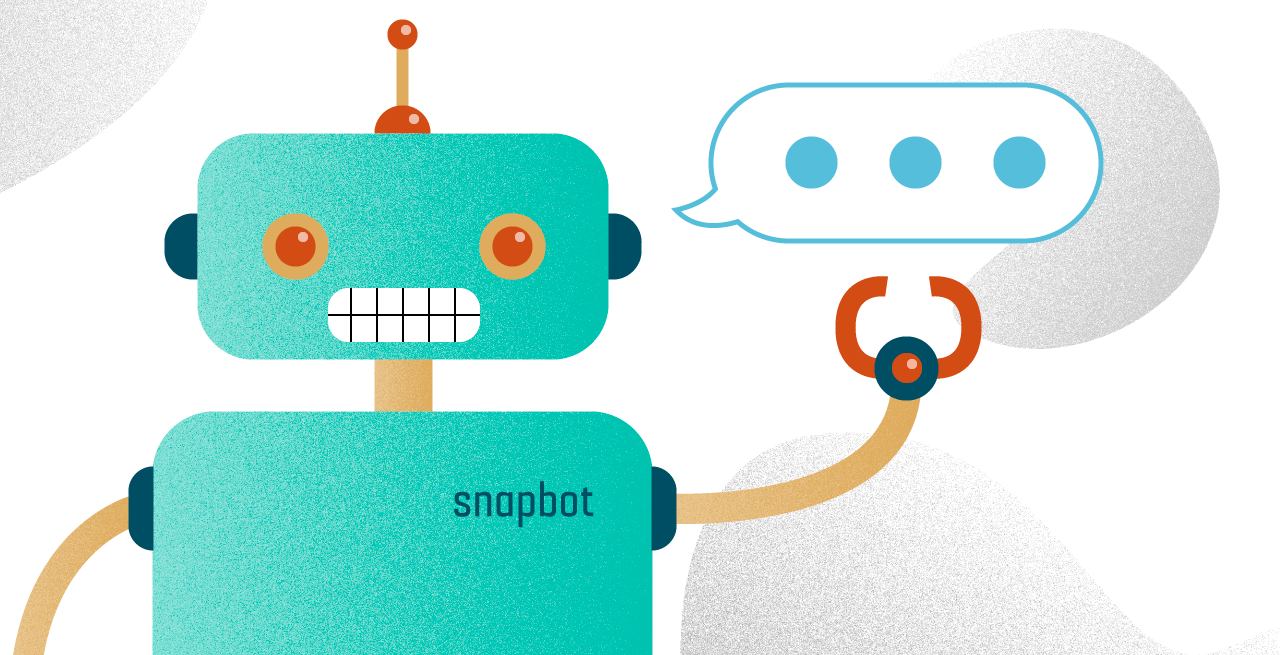Chatbots are everywhere. Whether they find you through a phone call from an unknown number, send you a DM, or pop up on a website landing page, these smart, useful little systems are becoming increasingly popular in a variety of different industries. In fact, it is predicted that 80 percent of businesses hope to be utilizing chatbots on their sites by 2020. To bring these stats closer to home, we ran a quick survey amongst our Snap team, and six of our team members confirmed interacting with a chatbot in the last 72 hours alone!
But volume doesn’t necessarily indicate success—many users find chatbots distracting and ultimately unhelpful. When misused, these programs can muddy the user experience on your website and even damage your brand reputation. Here’s some information that can help you decide whether or not a chatbot is a good move for your website.
What’s a Chatbot?

Loosely defined as a computer program or system that mimics human conversation, chatbots are artificially intelligent systems that prompt consumers to interact with them, or their parent source, in some way. Generally, these automated bots are activated within apps, live chats, emails, or texts, and are meant to create a better customer service experience for consumers.
Chatbots are a relatively new phenomenon, hitting the digital world in the late 1990s. Although the bots themselves are continually evolving, their purpose has remained the same. Today, the most effective uses of chatbots can be seen on e-commerce websites and the social media giant, Facebook. On web pages, bots are useful for directly interacting with site visitors to collect information and gather new, targeted leads. On Facebook, they’re often utilized on business-centered profiles in the same ways.
Chatbot Types
Ranging from relatively simple to incredibly complex, chatbots are usually categorized into two types.
Simple Chatbots
Generally programmed to respond to keywords, simple chatbots are useful but basic—they can only provide limited help based on the keywords entered that prompt their responses. This means that simple chatbots won’t be able to help consumers unless specific words or phrases are used. Many brands and businesses are turning to smart chatbots to enhance the customer experience instead.
Smart Chatbots
Smart chatbots utilize artificial intelligence to answer inquiries, as opposed to predefined answers based on keywords. As recorded customer conversations improve their processing and answering abilities, these bots get “smarter.” This type of AI will only continue to grow more effective as its evolution continues.
To Use or Not to Use, That’s the Question

More big brands and businesses are using chatbots today than yesterday, and more will be using them tomorrow. Taking notes from their successes (and failures) can be helpful to any company trying to decide whether or not to implement these tools. Before any sort of implementation, a business should make sure chatbots would be a good fit for the needs of their primary consumer base. In order to figure that out, it’s important to understand how these tools can improve—or complicate—the user experience.
When to Use Chatbots
Usually popping up as a conversation blurb on the bottom right of a screen, chatbots help consumers by providing either simple or complex answers (depending on the type of bot used) to inquires. Chatbots are most useful to e-commerce sites and extremely large companies with a significant online presence. These companies are able to staff a customer service representative around the clock to answer more complicated questions.
If you own a smaller business, a chatbot could help address specific customer needs, such as what products might work with an existing configuration. But hold off for a minute—smaller businesses have quite a few reasons not to utilize these programs!
When Not to Use Chatbots
Although chatbots are undeniably helpful for some businesses, they can actually be a hindrance to others. For small to mid-sized B2B companies, we recommend not using a chatbot, because most businesses this size don’t have a branded employee tasked with constantly answering complex customer questions.
Another concern is that a chatbot might appear to be a helpful solution when really it’s acting as a bandage over a bigger problem of confusing site architecture and poor user experience. If customers are having trouble finding information on your website, you don’t need a chatbot—you need a redesign! Once your site is formatted correctly and includes all necessary information, you can reevaluate the potential usefulness of a chatbot.
Get an Expert Opinion from Snap

Some companies take a “more is better” approach to their websites, but that can result in a crowded page with long loading times and ultimately a negative customer experience. That being said, some larger businesses can benefit from implementing a chatbot on their site. If you’re still on the fence about utilizing chatbots, contact Snap today. Our expert team of developers, digital marketers, and social media pros can offer a recommendation based on what will work best for your website and business needs.
